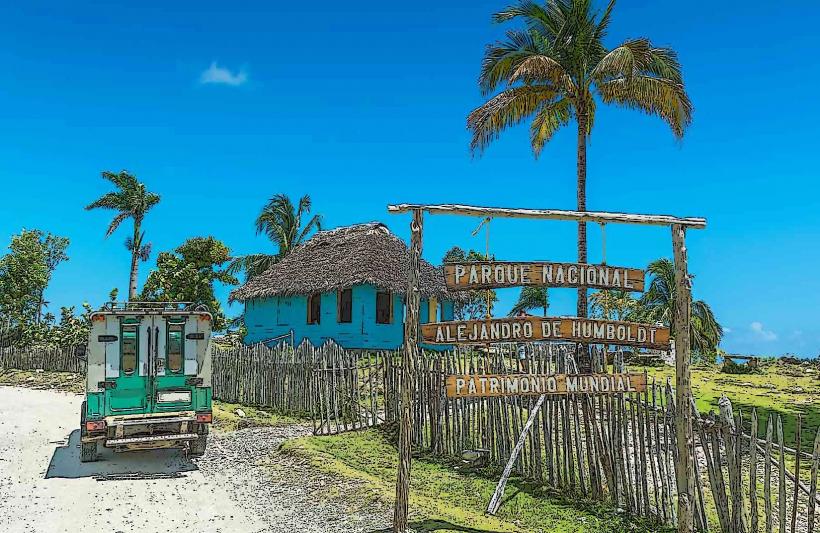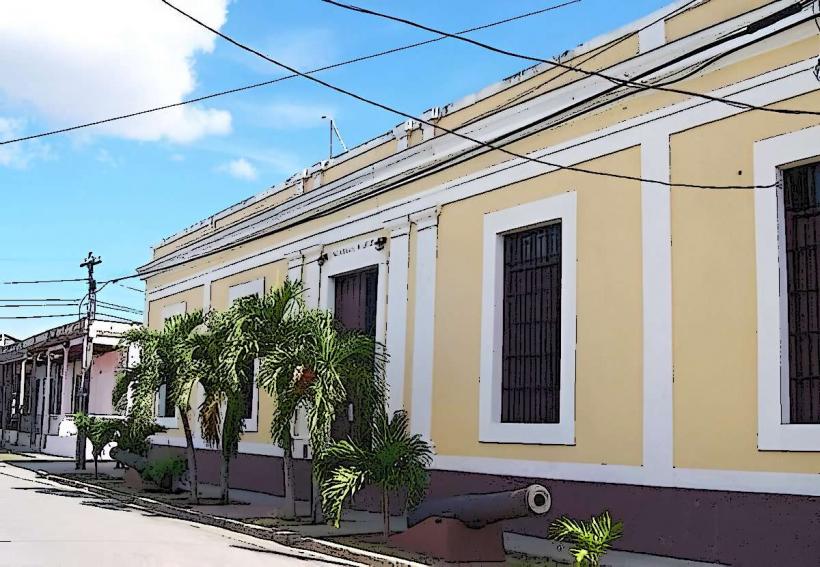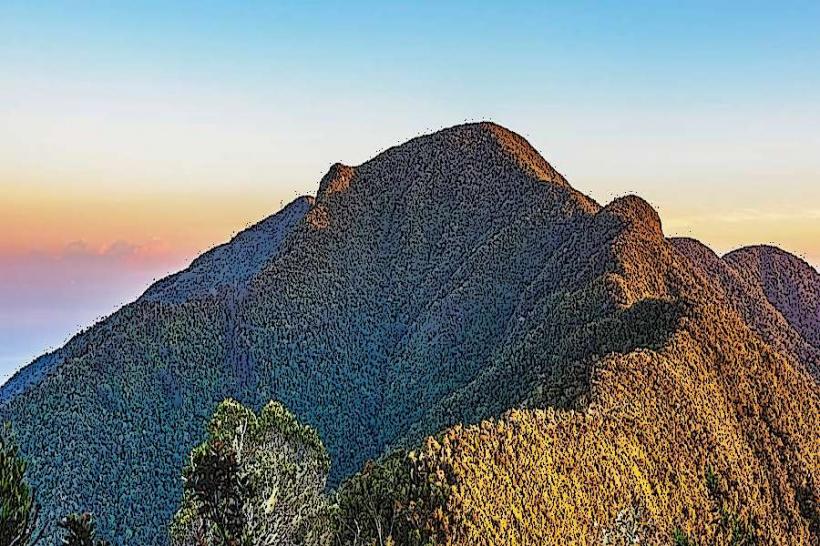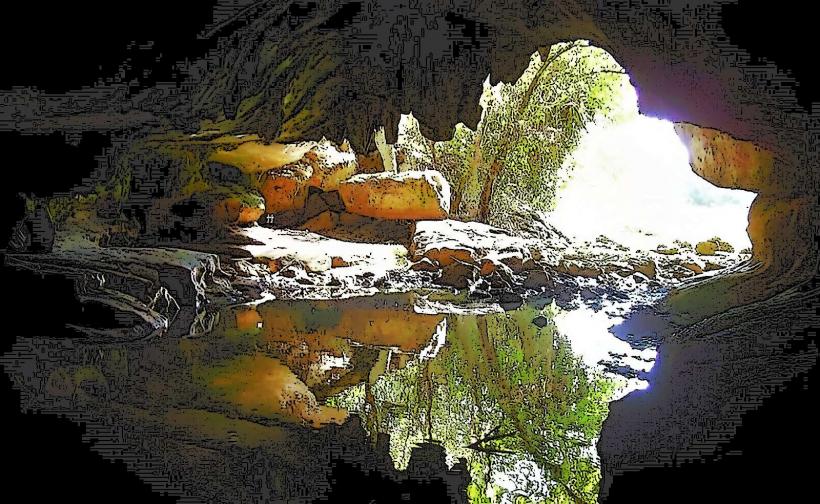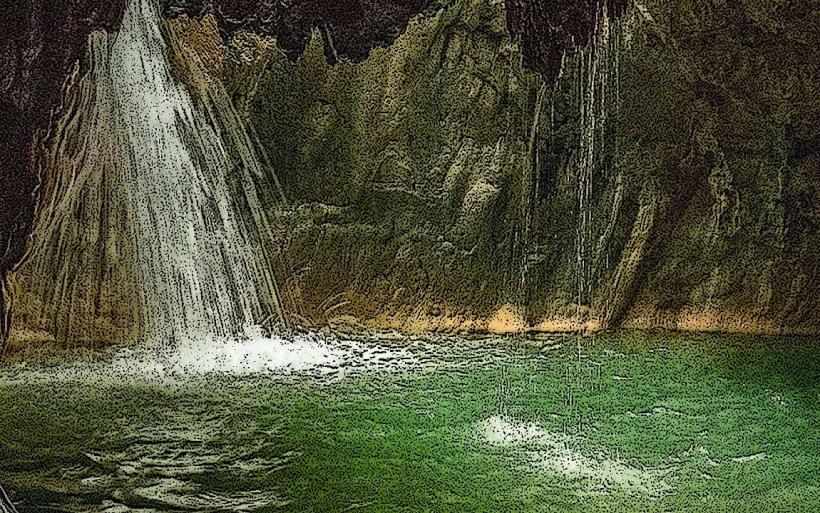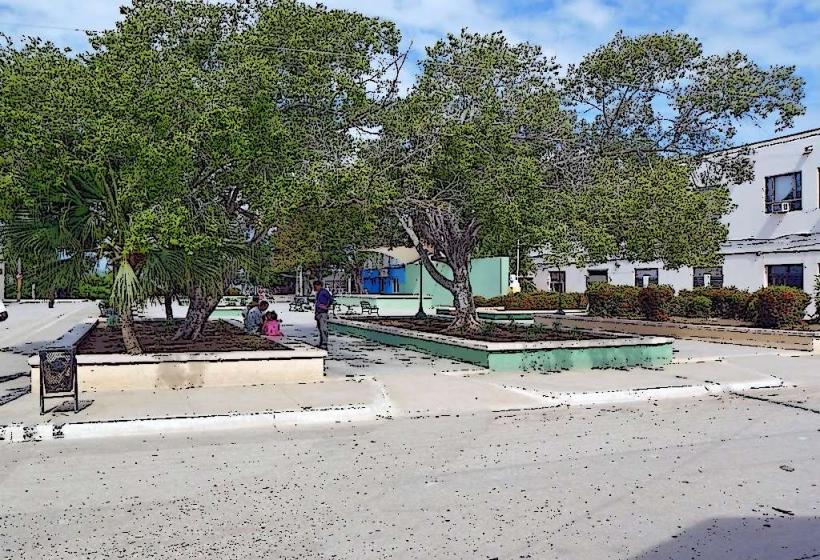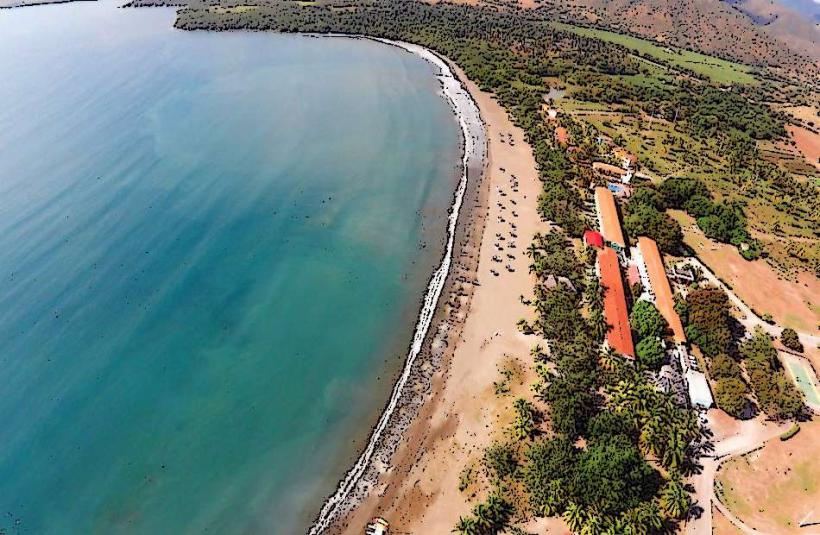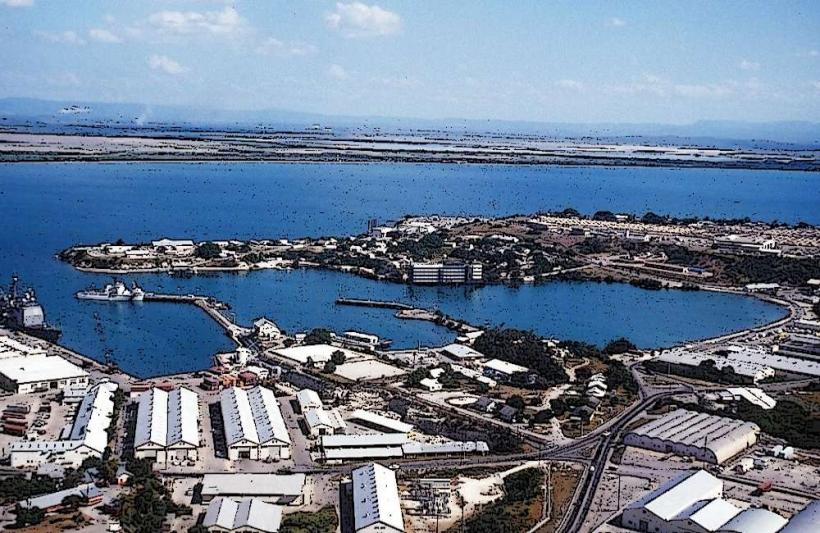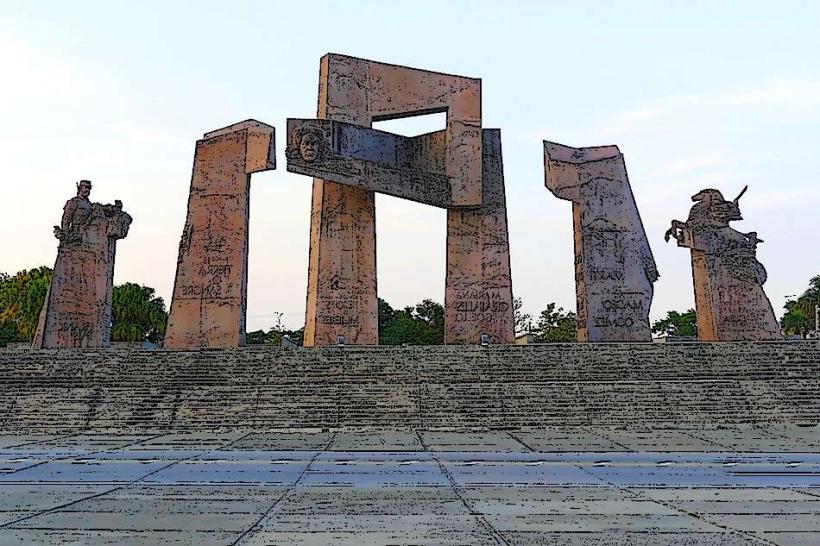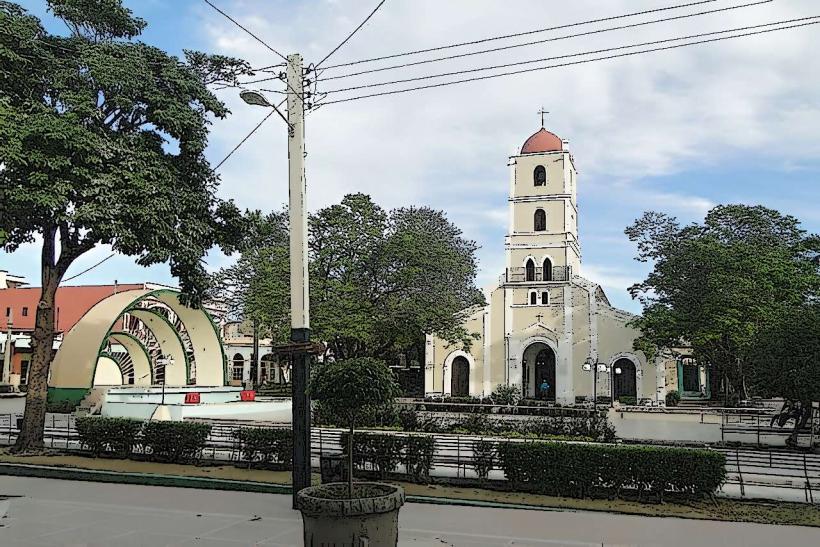Information
City: GuantanamoCountry: Cuba
Continent: North America
Guantánamo is a city located in southeastern Cuba, serving as the capital of Guantánamo Province. The city is historically significant and rich in cultural diversity, with a unique blend of Cuban, African, and Caribbean influences. It is situated near the famous Guantánamo Bay but is distinct from the U.S. military base located at the bay. Here's a detailed overview of Guantánamo:
1. Geography and Climate
- Location: Guantánamo is situated on the southern coast of Cuba, approximately 900 kilometers (560 miles) east of Havana. The city is surrounded by lush tropical vegetation and is near both the Caribbean Sea and the Sierra de los Órganos mountain range.
- Climate: The city has a tropical climate, characterized by warm temperatures year-round, with an average range of 24°C to 31°C (75°F to 88°F). Summers are hot and humid, while winters are mild and more comfortable. The region experiences a rainy season from May to October, with the possibility of hurricanes during late summer and early fall.
2. History
- Colonial Era: Guantánamo was originally inhabited by the Taino indigenous people, and later, it was colonized by the Spanish in the early 16th century. The Spanish built a small settlement in the area in the 1500s, although Guantánamo did not become an important regional center until the 19th century.
- 19th Century: The city played a role during the Ten Years' War (1868-1878) and the War of Independence (1895), both of which were critical to Cuba's struggle for independence from Spain. Guantánamo’s strategic location made it a key point for both military and economic activities during these conflicts.
- U.S. Naval Base: Guantánamo Bay is famous for the U.S. Naval Base, which was leased to the United States in 1903 after the Platt Amendment was passed. This naval base is located just outside the city, and the presence of the base has played a significant role in the area's political and social dynamics. The base continues to be a point of tension between the U.S. and Cuba.
- Cuban Revolution: Guantánamo was an important site in the Cuban Revolution, and many of the rural areas around the city were used as strongholds by revolutionary forces during the 1950s. After the triumph of the revolution in 1959, Guantánamo and its surrounding areas played a role in Cuba's post-revolutionary restructuring.
3. Key Attractions and Landmarks
- Cueva de los Panaderos: Located just outside Guantánamo, this cave system is notable for its archaeological significance. It is believed to have been a site of early human habitation and contains ancient Taino petroglyphs (rock carvings). The site is a must-see for visitors interested in Cuba’s pre-Columbian history.
- Plaza 24 de Febrero: The central square of Guantánamo, known as Plaza 24 de Febrero, is where many of the city's important cultural and political events take place. The square is surrounded by colonial-era buildings and features a prominent monument to the Cuban Revolution.
- Parque José Martí: This public park is dedicated to José Martí, the national hero of Cuba and a leader in the country's fight for independence. The park is a peaceful place to relax and enjoy the local atmosphere.
- Museo Provincial de Guantánamo: The provincial museum offers a look into the history and culture of the region, with exhibits covering indigenous culture, colonial history, and the Cuban Revolution. The museum is a great place to learn about Guantánamo’s diverse heritage.
- La Loma de la Cruz: Located on the outskirts of the city, La Loma de la Cruz is a hill that offers panoramic views of Guantánamo. The hill is home to a large cross, which is a local landmark and is often the site of religious celebrations. It is also a great spot for hiking and enjoying the natural beauty of the area.
- Playa de Guardalavaca: While not within the city itself, Guardalavaca Beach is located a short distance from Guantánamo and is one of the most popular coastal destinations in the region. The beach is known for its white sand and crystal-clear waters, making it an ideal spot for swimming, snorkeling, and relaxation.
4. Culture and Traditions
- Music: Guantánamo is famous for its musical heritage, particularly in the genres of son, guaracha, rhumba, and bolero. The city has produced numerous influential musicians, including Compay Segundo of Buena Vista Social Club fame. Rumba and salsa are also popular in local cultural events.
- African Influence: Due to its proximity to the Caribbean, Guantánamo has a significant African influence in its culture, particularly through the legacy of the Afro-Cuban population. This influence is reflected in local music, dance, and religion, with Santería (an Afro-Cuban religion) being particularly important.
- Festivals: One of the key festivals in Guantánamo is the Fiesta del Fuego (Festival of Fire), which is a cultural celebration held every July. The festival showcases traditional Cuban music, dance, and crafts, and it attracts visitors from across the island. It is a major event that highlights the Caribbean heritage of the region.
- Handicrafts: Guantánamo is also known for its traditional crafts, including wooden carvings, woven baskets, and ceramic pottery, many of which are produced by local artisans. These crafts reflect the cultural diversity of the region and are popular as souvenirs.
5. Cuisine
- Cuban Dishes: As with much of Cuba, rice and beans are staples of the local diet. Typical Cuban dishes like ropa vieja (shredded beef), arroz con pollo (chicken with rice), and tostones (fried plantains) are commonly served in Guantánamo. The region is also known for its use of coconut, which is often incorporated into savory dishes and desserts.
- Seafood: Guantánamo’s coastal location means that fresh seafood is widely available. Shrimp, lobster, and fish are often served in restaurants, and local seafood dishes like camarones al coco (shrimp in coconut sauce) are popular.
- Sweets: Guava is an important fruit in Cuban cuisine, and guava paste and sweet guava pastries are common desserts. Turrón (a coconut and sugar candy) is another traditional sweet in the region.
- Rum: Guantánamo is known for producing high-quality Cuban rum, and local rum varieties are widely available in bars and restaurants. It is commonly enjoyed as a mojito, cuba libre (rum and cola), or in various tropical cocktails.
6. Economy
- Agriculture: Guantánamo Province is primarily agricultural, with significant production of tobacco, sugarcane, coffee, and citrus fruits. The fertile soil in the area is well-suited for farming, and the region has long been a major producer of Cuban agricultural products.
- Cattle Farming: The province is also involved in cattle farming, producing beef and dairy products. The agricultural industry is an essential part of the local economy.
- Tourism: While Guantánamo is not as heavily visited as other Cuban cities like Havana or Varadero, tourism is growing, particularly in the natural attractions surrounding the city and the nearby beaches. The region also attracts those interested in cultural tourism, particularly related to the history of Afro-Cuban culture and the Cuban Revolution.
- Manufacturing: There is some light manufacturing in the region, particularly in the production of goods related to agriculture and food processing. The presence of the U.S. Naval Base also contributes to the local economy, although it remains a point of political tension.
7. Transportation
- By Car: Guantánamo is well-connected by road to other parts of Cuba. The city is about a 7-hour drive from Havana and 5 hours from Santiago de Cuba. The surrounding area can be explored by rental car or local buses.
- By Bus: Viazul operates long-distance bus services connecting Guantánamo to major Cuban cities, such as Havana, Santiago de Cuba, and Holguín. Buses are a popular choice for visitors who prefer not to drive.
- By Air: Guantánamo has a small airport, Mariana Grajales Airport, which offers limited flights within Cuba. The nearest major international airport is in Santiago de Cuba.
8. Ecotourism and Outdoor Activities
- Hiking and Nature Trails: The surrounding mountains and forests offer hiking trails that provide stunning views of the region’s natural beauty. Visitors can explore the Sierra de los Órganos mountain range, which is home to diverse flora and fauna.
- Birdwatching: Guantánamo is a good destination for birdwatching, with several protected areas offering opportunities to observe endemic species of birds.
- Beaches: The nearby beaches, including Playa de Guardalavaca and Playa Maguana, are ideal for swimming, snorkeling, and relaxing. The unspoiled nature of the beaches makes them perfect for those seeking a quieter experience away from more crowded resorts.
Conclusion
Guantánamo is a city with a unique blend of history, culture, and natural beauty. From its role in the Cuban Revolution to its rich Afro-Cuban heritage and stunning landscapes, the city offers a diverse and authentic Cuban experience. Whether you’re exploring the colonial history, enjoying the local music scene, or venturing out to the surrounding nature, Guantánamo provides a fascinating destination for those looking to experience a lesser-known side of Cuba.

